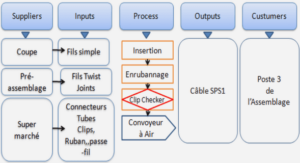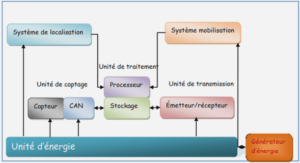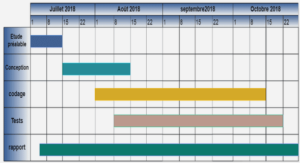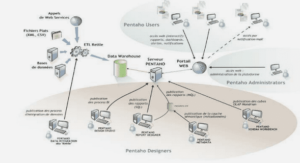Fonction du silicium dans le bambou


|
Table des matières
INTRODUCTION
CHAPITRE
1
: SYNTHESE
BIBLIOGRAPHIQUE
1. LE
CUIVRE
DANS
LES
PLANTES
1.1. Le
cuivre,
oligoélément
1.2. Mécanismes
de
prélèvement
1.2.1 Adsorption
du
cuivre
dans
l’apoplasme
racinaire
1.2.2 Absorption
racinaire.
1.3. Homéostasie
au
sein
de
la
cellule
1.4. Transport
et
complexation
1.5. Distribution
1.6. Toxicité
1.6.1 Rhizotoxicité
1.6.2 Stress
oxydatif
et
génotoxicité
1.6.3 Phytotoxicité
au
niveau
des
parties
aériennes
1.7. Mécanisme
de
tolérance
à
la
toxicité
de
Cu
1.8. Utilisation
de
la
spectros copie
d’absorption
des
rayons
X
pour
étudier
la
spéciation
de
Cu
dans les plantes
2. LE
SILICIUM
2.1. Teneur
en
Si
dans
les
plantes
et
dans
le
bambou
2.2. Absorption
racinaire
2.3. Transport
et
stockage
2.4. Fonction
du
silicium
dans
le
bambou
2.5. Métaux
et
silicium
2.5.1 Modification
des
conditions
environnementales
2.5.2 Augmentation
de
la
biomasse
2.5.3 Diminution
de
l’absorption
des
métaux
2.5.4 Modification
de
la
répartition
des
métaux
2.5.5 Modification
de
l’expression
de
gènes
3. BILAN
DU
CHAPITRE
I
4. REFERENCES
BIBLIOGRAPHIQUES
CHAPITRE
II :
DISTRIBUTION
AND
VARIABILITY
O F
SILICON,
COPPER
AND
Z IN C
IN
DIFFERENT
BAMBOO
SPECIES
1. INTRODUCTION
2. MATERIALS
AND
METHODS
2.1. Geographical
area
of
the
study,
soil
description
and
sampling
procedure
2.2. Soil
material
and
analysis
2.3. Plant
material
and
analysis.69
2.4. Statistical
analyses.
3. RESULTS
3.1. Soil
3.2. Between
plant
parts
3.3. Between
plant
species
4. DISCUSSION
4.1. Phytoavailability
of
Si,
Cu
and
Zn
4.2. Origin
of
Si
variation
in
bamboos
4.3. Origin
of
Cu
and
Zn
variability
in
bamboo
4.4. Interactions
between
metals
and
Si
5. BILAN
DU
CHAPITRE
II
6. REFERENCES
BIBLIOGRAPHIQUES
CHAPITRE
III
:EFFECTS:
OF:
SILICON:
AND:
COPPER
:ON
:BAMBOO:
GROWN HYDROPONICALLY.
1 INTRODUCTION
2 MATERIAL
AND
METHODS
2.1 Plant
material,
experimental
design
and
preculture
2.2 Experiment
in
nutrient
solution
2.2.1 Phase
I:
Si
treatment
2.2.2 Phase
II:
Cu
+
Si
treatment
2.3 Plant
analysis
2.3.1 Growth
parameters
2.3.2 Analysis
of
tissues
2.4 Statistical
analyses
3 RESULTS
3.1 Evolution
of
the
element
concentrations
in
the
nutrient
solution
3.2 Bamboo
growth
parameters
and
elemental
distribution
4 DISCUSSION
4.1 Silicon
in
bamboo.
4.1.1 Mechanisms
of
silicon
accumulation
4.1.2 Effect
of
Si
uptake
on
the
nutrient
concentration
and
growth
parameters
4.2 Effects
of
copper
on
bamboo
growth
4.3 Effects
of
bamboo
Si
on
Cu
sensitivity
5 BILAN
DU
CHAPITRE
III
6 REFERENCES BIBLIOGRAPHIQUES
CHAPITRE
IV
: COPPER
DISTRIBUTION
AND
SPECIATION
IN
BAMBOOS
“Phyllostachys fastuosa”
EXPOSED
TO
DIFFERENT
COPPER
AND
SILICON
CONCENTRATIONS
1. INTRODUCTION
2. MATERIAL
AND
METHODS
2.1. Plant
material,
experimental
design
and
pre culture
2.2. Silicon
and
copper
treatment
2.3. Plant
analysis
2.3.1 Growth
parameters
2.3.2 Analysis
of
macro
and
micronutrients
2.4. Desorption
procedure
2.5. Anion
assays
2.6. Total
soluble
amino
acid
2.7. SEMEDX
2.8. LaboratoryBased
µXRF
2.9. EXAFS
and
XANES:
data
acquisition
and
analysis
2.10. Statistical
analyses
3. RESULTS
3.1. Silicon
and
coppe r
in
nutrient
solution
3.2. Growth
parameters
3.3. Cu
and
Si
distribution
between
plant
parts
3.4. Cu
and
Si
localization
in
the
root
3.5. The
effects
of
copper
and
silicon
on
some
plant
components
3.6. XANES
features
3.7. EXAFS
features1
4. DISCUSSION
5. SUPPORTING
INFORMATIONS
6. BILAN
DU
CHAPITRE
7. REFERENCES
BIBLIOGRAPHIQUES
CONCLUSIONS
ET
PERSPECTIVES
RESUME
ABSTRACT
![]() Télécharger le rapport complet
Télécharger le rapport complet





